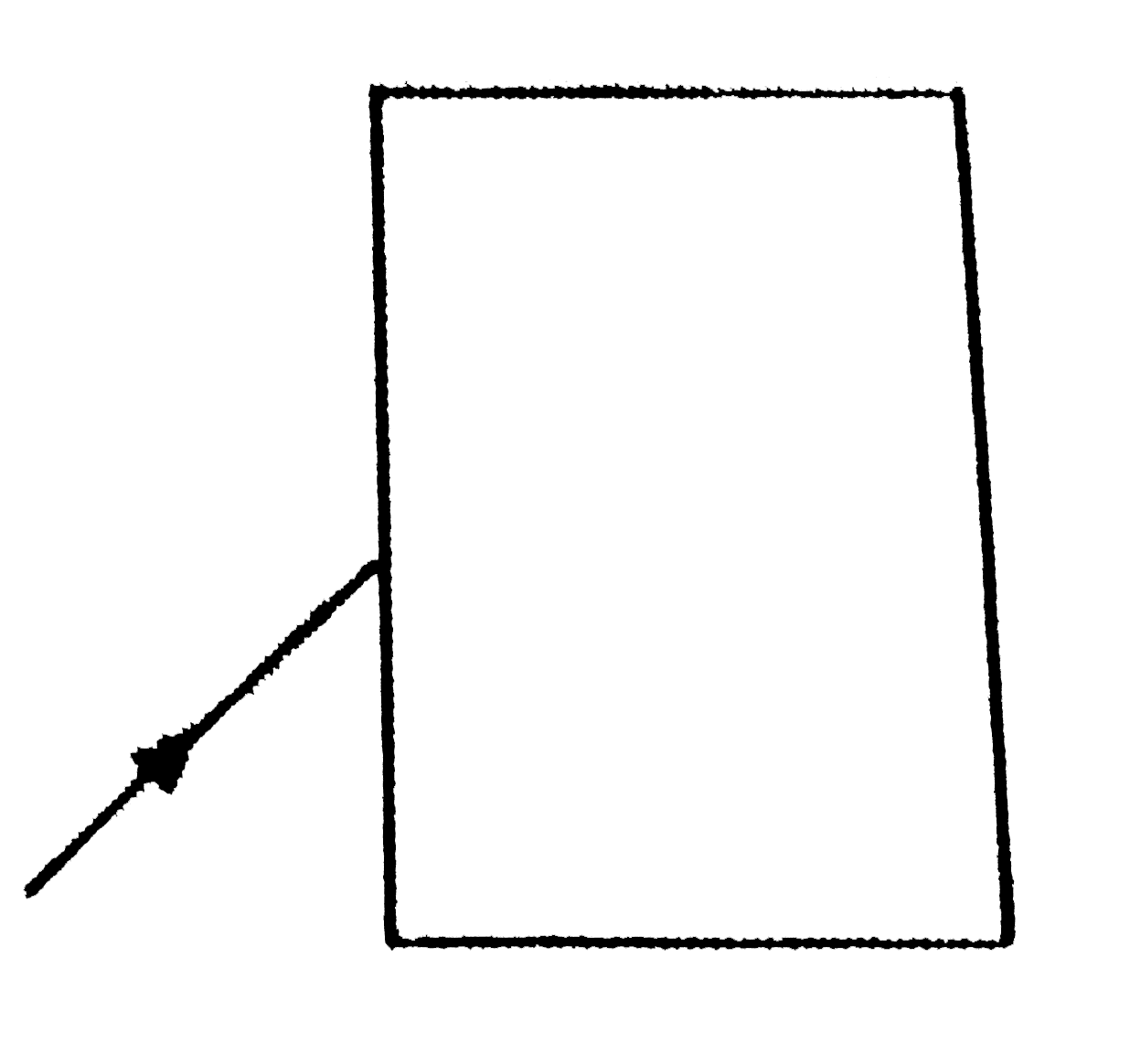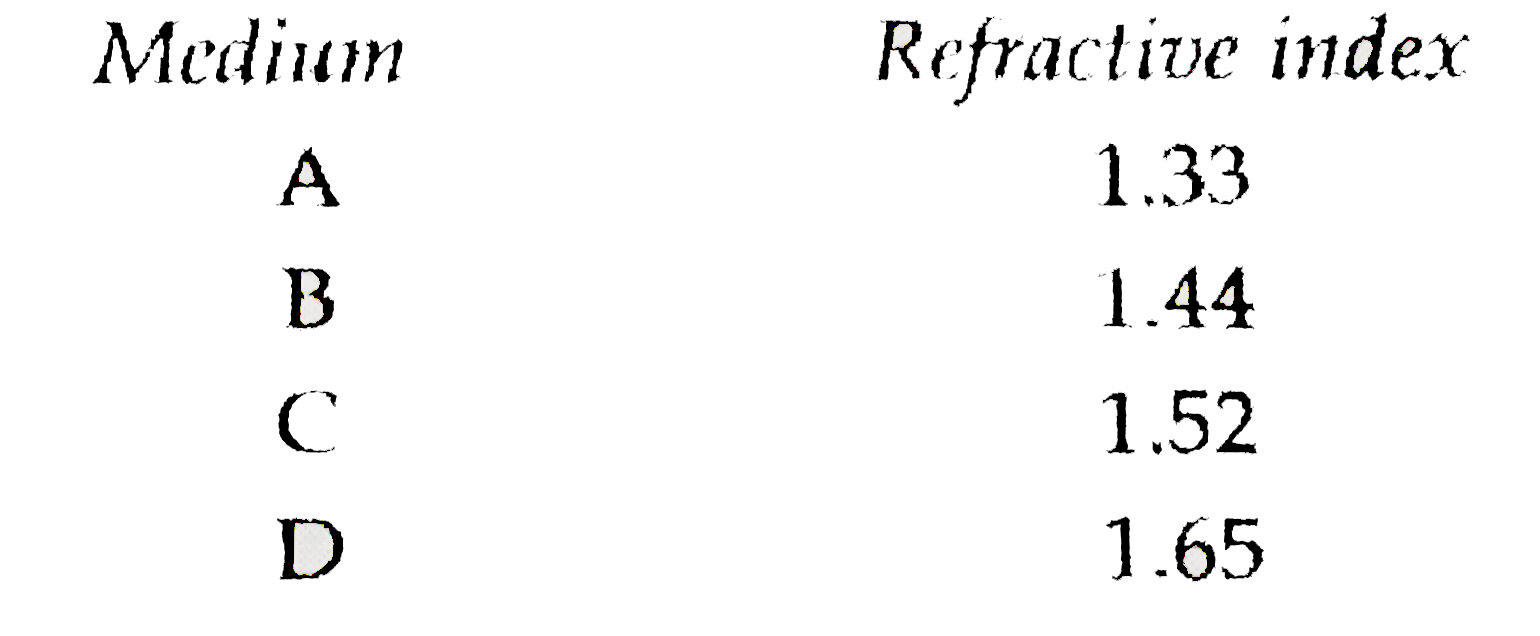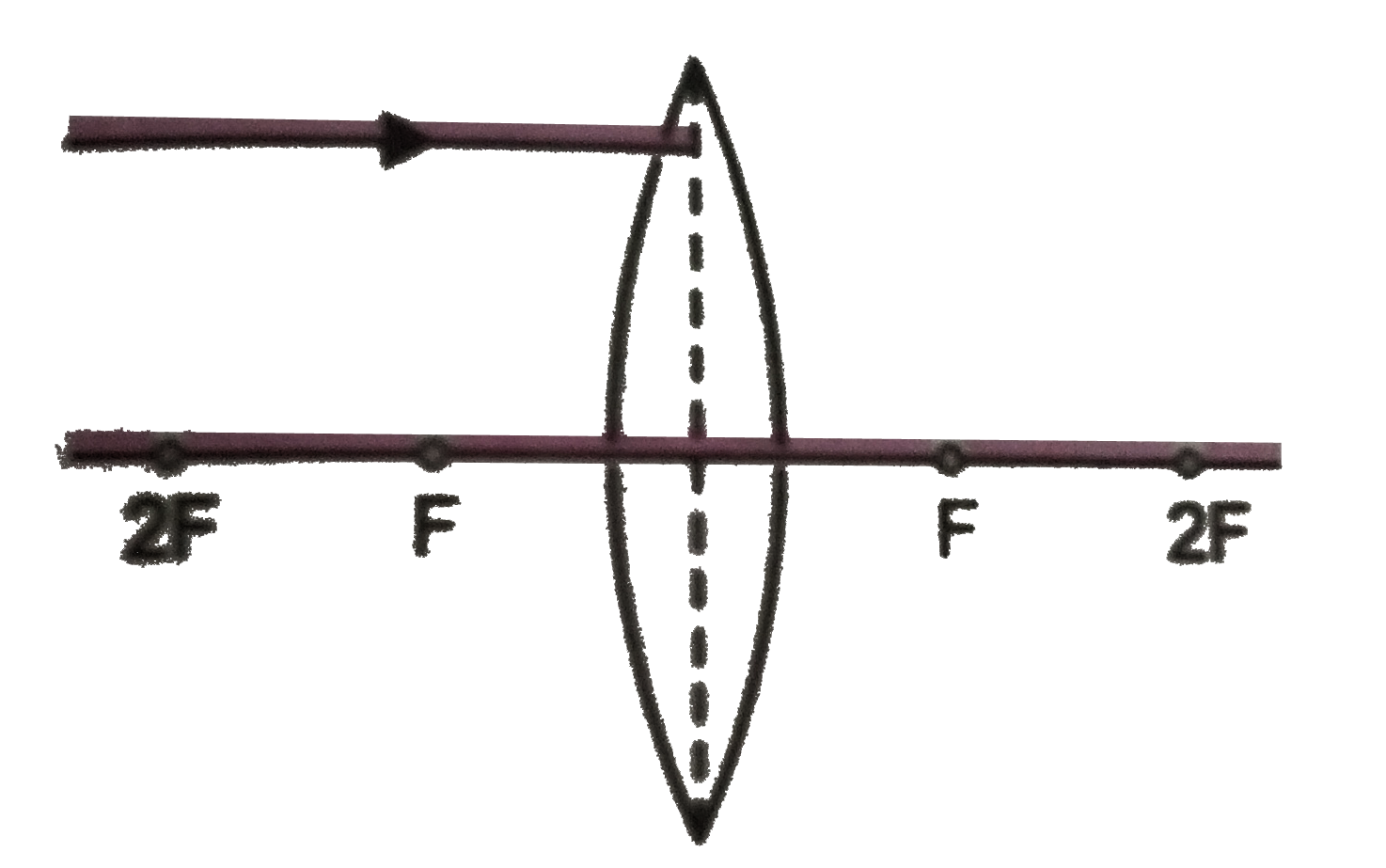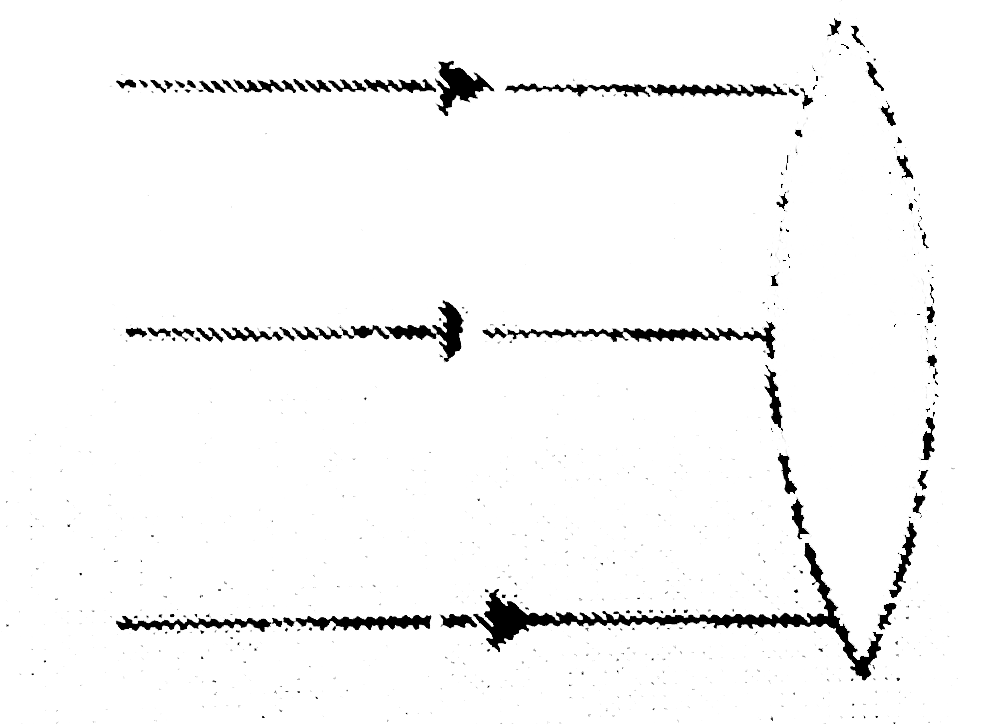Complete Solutions to Exercise of chapter REFRACTION OF LIGHT of Class 10 book with complete answers and questions
| Class 10 | PHYSICS |
| Chapter | REFRACTION OF LIGHT |
| LAKHMIR SINGH & MANJIT KAUR | Exercise |
| Number Of Questions | 100 |
| Academic Year | 2023-24 |
If a ray of light goes from a rarer medium to a denser medium, will it bend towards the normal or away from it?
02:01View Solutionif a ray of light goes from a denser medium to a rarer medium, will it bend towards the normal or away form the normal?
02:31View SolutionA beam of light travellig in a reactangular glass slab emerges into air. Draw a ray-diagram indicating the change in its path.
02:08View SolutionA beam of light travelling in air is incident on water. Draw a ray-diagram indicating the change in its path in water.
02:35View SolutionDraw a ray diagram showing the path of rays of light when it enters with oblique incidence (i) from air into water , (ii) from water into air.
02:28View SolutionA ray of light travelling in air is incident on a parallel-sided glass slab(or rectangular glass slab). Draw a ray-diagram indiciating the change in its path in glass.
02:20View SolutionA ray of light travelling in glass emerges into air. State whether it will bend towards the normal or away from the normal.
02:11View SolutionA ray of light travelling in air enters obliquely into water. Does the light ray bend towards the normal or away from the normal ? Why ?
02:51View Solutionif a ray of light goes from a denser medium to a rarer medium, will it bend towards the normal or away form the normal?
02:31View SolutionState two effects caused by the refraction of light.
01:28View SolutionName the phenomenon due to which a swimming pool appears less deep than it really is.
02:03View SolutionWhat a ray of light passes from air into glass, is the angle of refraction greater than or less than the angle of incidence?
02:02View SolutionWhy does a ray of light bend towards normal as it passes from air to glass ?
02:37View SolutionAs light rays pass from water into glass, are they refracted towards the normal or away from the normal?
03:31View SolutionIn which material do you think light rays travel faster-glass or air?
01:16View SolutionState whether the following statement is true or false?
Refraction occurs because light show down in denser materials.01:57View SolutionWhy does a ray of light bend when it travels from one medium to another.
00:53View SolutionFill in the following blanks with suitable words:
a) Light travelling along a normal is ………………………refracted.
b) Light bends when it passes from water into air. We say that it is………………………….01:41View SolutionWhat is meant by 'refraction of light'? Draw a labelled ray diagram to show the refraction of light.
05:19View SolutionA ray of light travelling in air incident on a rectangular glass block and emerges out into the air from the opposite face. Draw a labelled ray diagram to show the complete path of this ray of light. Mark the two points where the refractions of light takes place. What can you say about the final direction of ray of light?
03:47View SolutionDraw a labelled ray diagram to show how a ray of light is refracted when it passes:
a) From air into an optically denser medium.
b) from an optically denser medium into air.03:34View SolutionThe diagram given alongside shows a ray of light entering a rectangular block of glass.
a) Copy the diagram and draw the normal at the point of entry.
b) Draw the approximate path of the ray of light through the glass block and out of the other side.
 02:30View Solution
02:30View SolutionWhat is meant by the 'angle of incidence' and the 'angle of refraction' for a ray of light? Draw a labelled ray diagram to show the angle of incidence and the angle of refraction for a refracted ray of light.
02:12View SolutionLight travels more quickly through water than through glass.
a) Which is optically denser: water or glass?
b) if a ray of light passes from glass into water, which will it bend: towards the normal or away from the normal?02:57View SolutionDraw a labelled ray diagram to show how a ray of light passes through a parallel sided glass block:
a) if it hits the glass block at `90^(@)` (that is perpendicular to the glass block).01:38View SolutionWhen a light ray passes from air into glass, what happens to its speed? Draw a diagram to show which way the ray of light bends.
02:22View SolutionA pencil when dipped in water in a glass tumbler appears to be bent at the interface of air and water. Will the pencil appear to be bent to the same extent, if instead of water we use liquids like, kerosene or turpentine. Support your answer with reason.
01:34View SolutionLight is travelling from a denser medium to a rarer medim along a normal to the boundary:
02:02View SolutionA ray of light passes from glass into air. The angle of refraction will be:
02:01View SolutionA ray of light travelling in air goes into water. The angle of refraction will be:
02:27View SolutionThe speed of light in air is:
01:23View SolutionWhen a ray of light travelling in glass enters into water obliquely:
01:52View SolutionA ray of light travelling in water falls at right angles to the boundary of a parallel-sided glass block. The ray of light:
01:49View SolutionA ray of light passes from a medium X to another medium Y. No refraction of light occurs if the ray of light hits the boundary of medium Y at an angle of:
01:42View SolutionWhich of the following diagrams shows correctly the dispersion of white light by a prism ?
02:05View SolutionA vertical ray of light strikes the horizontal surface of some water:
a) What is the angle of incidence?
b) What is the angle of refraction?01:49View SolutionHow is the refraction of light ray from a plane mirror different from the refraction of light ray as it enters a block of glass?
05:01View Solutionhow does the light have to enter the glass:
a) to produce a large amount of bending?
b) for no refraction to happen?05:01View Solutiona) How can you bend light away from the normal?
b) How must light travel away from the normal?02:14View SolutionDraw and complete the following diagrams to show what happens to the beams of light as they enter the glass block and then leave it:
 02:45View Solution
02:45View SolutionWhy does a beam of light bend when it enters glass at an angle? Why does it not bend if it enters the glass at right angles?
03:17View SolutionWhat name is given to the ratio of sine of angle of incidence to the sine of angle of refraction?
01:07View SolutionWrite the relation between the angle of incidence and the angle of refraction for a medium.
02:54View SolutionWhat is the unit of refractive index?
02:23View SolutionWhich has higher refractive index: water or glass?
02:35View SolutionRefractive indices of carbon disulphide and ethyl alcohol are 1.63 and 1.36 respectively. Which is optically denser?
04:00View SolutionThe refractive index of diamond is 2.42. What is the meaning of this statement in relation to the speed of light?
02:22View SolutionIf the refractive index for light going from air to diamond be 2.42, what will bethe refractive index for light going from diamond to air?
01:56View SolutionHow is the refractive index of a material related to the speed of light in it?
02:21View SolutionFill in the following blank with a suitable word:
When a ray of light goes from air into a clear material, you see the ray bend. How much the ray bends to determined by the…………………………… of the material.03:30View SolutionGive three examples of materials that refract light rays. What happens to the speed of light rays when they enter these materials?
02:46View SolutionDefine Snell's law of refraction. A ray of light is incident on a glass slab at angle of incidence of `60^(@)`. If the angle of refraction be `32.7^(@)`, calculate the refractive index of glass. (Given: sin`60^(@)=0.866` and `sin32.7^(@)=0.540)`.
03:02View SolutionThe speed of light in vaccum and in two different glasses is given in the table below:

a) Calculate the absolute refractive indexes of flint glass and crown glass.
b) Calculate the relative index for light going from crown glass to flint glass.04:07View SolutionThe speed of light in air is `3 xx 10^(8)` m/s. IN medium X its speed is `2 xx 10^(8)` m/s and in medium Y the speed of light is `2.5 xx 10^(8)`m/s. Calculate:
a) `._("air")n_(X)`
b) `._(x)n_(y)`04:26View SolutionWhat is the speed of light in a medium of refractive index `6/5` if its speed in air is `3,00,000` km/s?
02:52View SolutionThe refractive index of glass is 1.5. Calculate the speed of light in glass. The speed of light in air is `3.0 xx 10^(8) ms^(-1)`.
02:50View SolutionThe speed of light in wateris `2.25 xx 10^(8)`m/s. If the speed of light in vaccum be `3 xx 10^(8)`m/s, calculatethe refractive index of water
03:03View SolutionThe refractive indices of four substances P,Q,R and S are 1.50, 1.36, 1.77 and 1.31 respectively. The speed of light is maximum in the substance:
02:57View SolutionThe refractive index of four materials A,B,C and D are 1.3, 1.43, 1.71 and 1.52 respectively. When the light rays pass from air into these materials, they refract the minimum in:
04:18View SolutionThe refractive index of glass for light going from air to glass is `3/2`. The refractive index for light going from glass to air will be:
02:36View SolutionThe refractive indexes of four substances P,Q,R and S are 1.77, 1.52, 1.65 and 1.36 respectively. When light travelling in air is incident on these substances at equal angles, the angle of refraction will be the maximum in:
03:29View SolutionThe refractive indexes of four substances P,Q,R and S are 1.77, 1.52, 1.65 and 1.36 respectively. When light travelling in air is incident on these substances at equal angles, the angle of refraction will be the maximum in:
03:29View SolutionThe refractive index of water is 1.33. What will be the speed of light in water
01:38View SolutionThe refractive index of water witih respect to air is `4/3`. The refractive index of air with respect to water will be:
02:24View SolutionRefractive indices of water, sulphric acid, glass and carbon disulphide are `1.33, 1.43, 1.53` and `1.63` respectively. The light travels slowest in:
03:13View SolutionThe refractive index of glass with respect to air is `3/2` and the refraction index of water with respect to air is `4/3`. The refractive index of glass with respect to water will be:
01:33View SolutionRefractive index of four media, A,B,C and D are given below:

In which of these four media is the speed of light (i) maximum, and (ii) minimum?03:59View SolutionName the lens which can concentrate sun's rays to a point and burn a hole in a piece of paper.
01:43View SolutionGive the usual name for the following:
A point inside a lens through which the light passes undeviated.01:37View SolutionA 1 cm high object is placed at a distance of 2f from a convex lens. What is the height of the image formed?
02:31View SolutionIf the image formed by a convex lens is of the same size as that of the object, what is the position of the image with respect to the lens?
02:27View SolutionIf an object is placed at the focus of a convex lens, where is the image formed?
02:40View SolutionWhere should an object be placed in order of to use a convex lens as a magnifying glass?
03:22View SolutionWhere should an object the placed in front of the mirror so as to obtain its virtual, erect and magnified image ?
01:07View SolutionWhere should an object be placed in front of a convex lens so as to obtain its real, inverted and magnified image?
03:33View SolutionFor what position of an object a real, diminshed image is formed by a convex lens?
03:01View SolutionIf an object is at a considerable distance (or infinity) in front of a convex lens, where is the image formed?
02:55View SolutionDraw the given diagram, Fig. in your answer book and complete it for the path of ray of light beyond the lens.
 01:27View Solution
01:27View SolutionWhere should an object be placed in order of to use a convex lens as a magnifying glass?
03:22View SolutionName two factors on which the focal length of a lens depends.
01:42View SolutionState any two uses of convex lenses.
00:58View SolutionFill in the following blanks with suitable words:
a) Parallel rays of light are refracted by a convex lens to a point called the……………
b) The image in a convex lens depends upon the distance of the ……………. From the lens.01:32View SolutionWhat is a lens? Distinguish between a convex lens and a concave lens. Which of the two is a converging lens: convex lens or concave lens?
02:58View Solutiona) Explain with the help of a digaram, why the convex lens is also called a converging lens.
b) Define principle axis, principle focus and focal length of a convex lens.02:57View Solutiona) Explain with the help of a diagram, why the concave lens is also called a diverging lens.
b) Define the principle focus of a convex lens.03:06View SolutionDraw a ray diagram to show the formation of a real magnified image by a convex lens. (In your sketch the position of object and image with respect to the principal focus of lens should be shown (clearly).
03:58View SolutionDescribe with the help of a ray-diagram, the formation of image of a finite object placed in front of a convex lens between f and 2f. Give two characteristics of the image so formed.
03:03View SolutionDescibe with the help of a ray diagram the nature, size and position of the image formed when an object is placed in front of a convex lens between focus and optical center. State three characteristics of the image formed.
03:07View SolutionAn object is placed at a distance equal to 2f in front of a convex lens. Draw a labelled ray diagram to show the formation of image. State two characteristics of the image formed.
02:56View SolutionDescribe with the help of a ray-diagram, the size, nature and position of the image formed by a convex lens when an object is placed beyond 2f in front of the lens.
03:14View SolutionDescribe with the help of a ray diagram the nature, size and position of the image formed when an object is placed at infinity (considerable distance) in front of a convex lens. State three characteristics of the image so formed.
03:08View Solutiona) What type of lens is shown in the diagram on the right? What will happen to the parallel rays of light? Show by completing the ray diagram.
b) Your eye contains a convex lens. Why is it unwise to look at the sun?
 03:42View Solution
03:42View SolutionWhere must the object be placed for the image formed by a converging lens to be:
a) real, inverted and smaller than the object?
b) real, inverted and same size as the object?
c) real, inverted and larger than the object?
d) virtual, upright and larger than the object?05:19View SolutionDraw a diagram to show how a converging lens held close to the eye acts as a magnifying glass. Why is it usual to choose a lens of short focal length for this purpose rather than one of long focal length?
03:32View SolutionHow would you find the focal length of a convex lens rapidly but approximately?
03:05View Solutiona) With the help of a labelled diagram explain how a convex lens converges a beam of parallel light rays. Mark the principle axis, optical center, principal focus and focal length of the convex lens on the diagram.
b) State whether convex lens has a real focus or a virtual focus.
c) List some things that convex lens and concave mirror have in common.04:01View Solutiona) With the help of a labelled diagram, explain how a concave lens diverges a beam of parallel light rays. Mark the princple axis, optical center, principle focus and focal length of the convex lens on the diagram.
b) State whether concave lens and convex lens mirror have in common.02:55View SolutionDraw ray diagrams to represent the nature, position and relative size of the lens for the object placed:
a) at `2F_(1)`,
b) between `F_(1)` and the optical center O of the lens.
Which of the above two cases shows the use of convex lens as a magnifying glass? Give reasons for your choice.04:31View Solutiona) An object is placed well outside the principle focus of a convex lens. Draw a ray diagram to show how the image is formed, and say whether the image is real or virtual.
b) What is the effect on the size and position of the image of moving the object i) towards the lens, and ii) away from the lens?04:05View Solutiona) Explain what is meant by a virtual, magnified image.
b) Draw a ray diagram to show the formation of a virtual magnified image of an object by a convex lens. In your diagram, the position of object and image with respect to the principle focus should be shown clearly.
c) Three convex lenses are available having focal lengths 4cm, 40 cm and 4 m respectively. Which one would you choose as a magnifiying glass and why?05:08View Solution
Exercise questions and complete solutions for chapter REFRACTION OF LIGHT of S CHAND PHYSICS (HINGLISH) of Class 10
